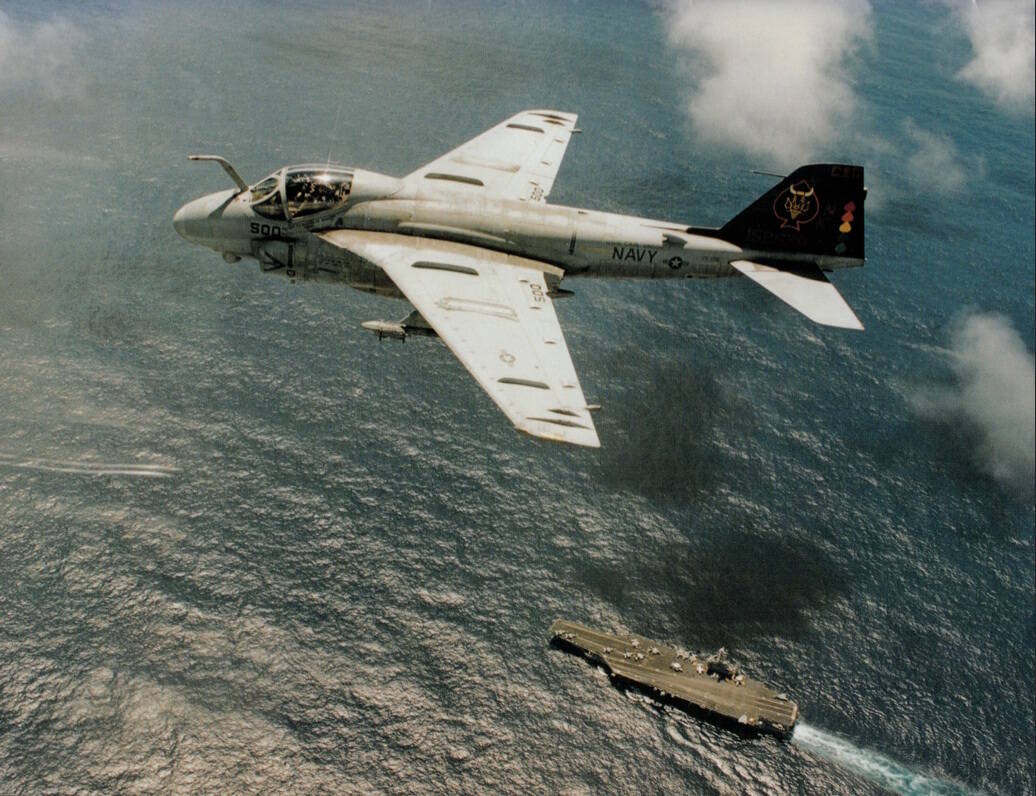The third act of “Top Gun: Maverick” was shot in low-level training routes out of Naval Air Station Whidbey Island, through the Cascade Mountains, and it’s no surprise that the base is filled with daring aviators and colorful call signs. But not everything is what Hollywood makes it to be.
Call signs, nicknames for pilots or aircraft, can be quick identifiers for military crew. Historically, they’ve been used to confuse enemies listening in. Their first use was in the 1930s, as radio became more commonplace, but popularity took off in the 1970s.
It’s simpler to call out an organization or a unit by a name rather than the long serial number on the tail of an aircraft, said Oak Harbor resident, Ret. Army National Guard Brig. Gen. Michael Bobeck.
Retired Navy Capt. Dave Williams, former commanding officer of NAS Whidbey, agrees, saying that call signs make radio commands more succinct. A commander can alert a specific aviator where the “bad guys” are over the radio, without saying who or where the pilot is.
Different branches have different naming conventions. At NAS Whidbey, the pilot name typically comes first, and sometimes the unit is named after the pilot, said Peter Hunt, a former A-6 Intruder pilot.
The biggest misconception is that call signs are cool, he said. They don’t come from any legendary feat, but from something embarrassing.
“The wardroom has failed if you like your call sign,” he said.
The more a pilot tries to talk themselves out of their call sign, the more it will stick, Williams said.
One of Hunt’s friends forgot his uniform and had to use a high-ranking officer’s flight jacket on a hot day, Hunt said. From then on, his call sign was Sweaty.
Two members of Hunt’s squadron who had the same last name became Big Head and Little Head, he said, for obvious reasons.
If a call sign is cool, it’s coincidence, he said.
“Sometimes it works out well, if it’s kind of a cool sound, but the circumstances are not exactly ‘Top Gun,’” he said.
Case in point is Cmdr. David Harris, former commander of the U.S. Pacific Fleet Electronic Attack Wing, whose call sign is about as “Top Gun” as it gets: Rooster.
Harris, who shares the call sign with Goose’s son, earned his name long before “Top Gun: Maverick,” because the hair on the back of his head stuck straight up like a rooster tail.
Harris had the chance to meet Miles Teller, who played Rooster in the movie, when they were filming on Whidbey. At the time, Teller asked Harris if he wanted to arm wrestle for the moniker.
What true aviators like about the “Top Gun” movies is the authenticity of the flight scenes, Williams said. The storylines, on the other hand, are absurd.
“You don’t just show up on some Iranian base and find an F-14 and fly out of there,” he said.
When Steve Bristow, a retired Navy commander, was in the ROTC in the 1980s and there was discussion about intervening in the Iran-Iraq war, his mates thought he was up next, he said.
“I just happened to have a gun, and I just happened to be walking in, and there happened to be a crowd of guys there, and 40 years later they still call me G.I. Stow,” he said.
Williams earned his call sign, Doogie, from “The Van,” a 1977 low-budget teen comedy. On deployment, supply ships would bring movies on film roles that the crew would watch on a projector. They weren’t the best movies, he said.
In “The Van,” after a “nasty character” named Dugan is called a turd, he responds, “Nobody calls Dugan a turd.” The next morning, Williams opened the all-pilots meeting with that line, and became Doogie ever since.
One of his fellow pilots was balding and had a large forehead, Williams said. They called him Dome. Another, Blackjack, got the name because his hair was black and his name was Jack.
Some aviators laugh at the whole concept of call signs, he said, thinking it’s overly macho.
At Naval Air Station Subic Bay in the Philippines, aviators had plaques with their names and call signs. Some members of Williams’ patrol squadron thought the naming convention was silly, so on their plaques it read, mockingly, “Lieutenant Bob ‘Bob’ Smith” or “Lieutenant Fred ‘Fred’ Holmes.”
In the Army, the unit has a call sign and the individual has a number based on their position, Bobeck said. Sometimes there’s a historical significance to it. When he was stationed in Iraq, his unit was called Empire, as he was with the New York National Guard.
The aircraft that would shuttle soldiers to different areas in Iraq was called Catfish, he said. The commander was from the Mississippi National Guard and held a civilian job as a catfish farmer.
Years later, Bobeck returned, and the commander was gone, but the soldiers still referred to the aircraft as Catfish. No one knew why.



